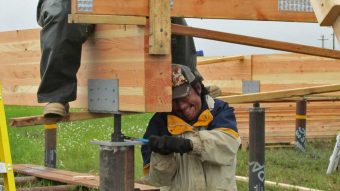Celium: Cellulose-Mycelium Composites For Carbon Negative Buildings/Construction
Celium: Cellulose-Mycelium Composites For Carbon Negative Buildings/Construction This project seeks to develop and de-risk cost-effective, bio-based insulation by fabricating net CO2-negative cellulose-mycelium composites with high-performance thermal, acoustic and antimicrobial properties. We propose to do so by valorizing cellulosic fibers with mycelium, the root network of fungi, to create a new class of high-performing, carbon capturing…























































































































